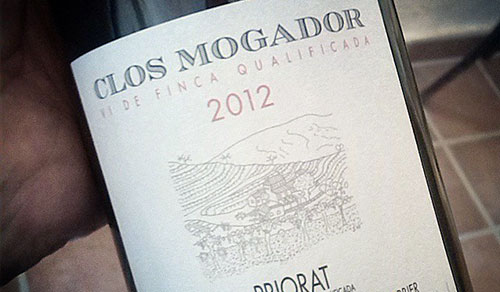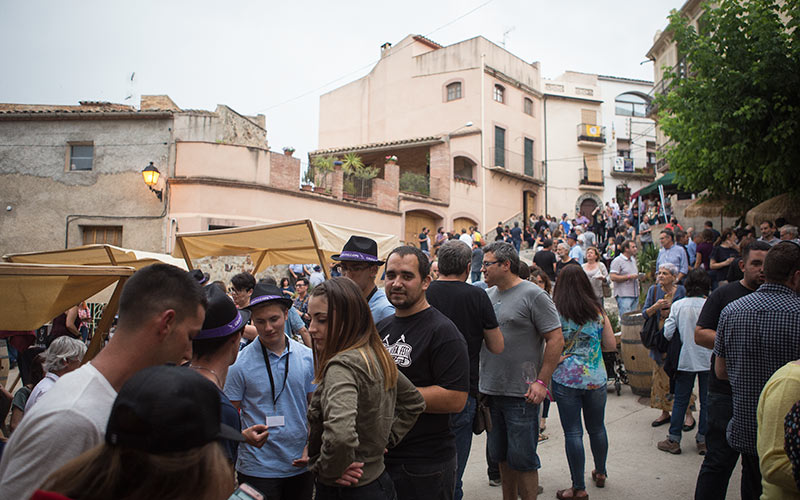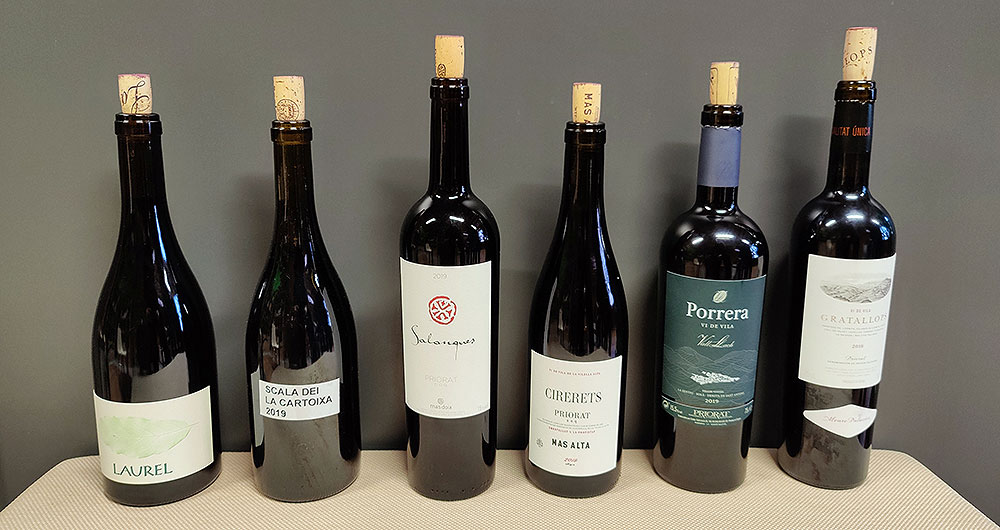On our first day while staying at Hostal Sport, we took a quick jaunt up to Clos Figueras which exemplifies most everything that’s good about Priorat. Honestly, prior to heading there, I was suspecting that I wouldn’t like it much and assumed that it would have points-driven wines that were bold, but not really showing much about the locale. I was basing this assumption on price as well as well, the points they’ve received. I was wrong.
Summing up their history, owner Christopher Cannan is one of the people in Priorat who have been there a long time and his winery gets no end of accolades and attention. Rightly so as the wines are indeed excellent craft wines. Yes, they’re a bit pricey, but when you take in the very difficult to farm terraces of Priorat and the very, very low production of the winery, you can understand why. Also understandable is why events like this one yesterday in Florida go out of their way to feature the Clos Figueras wines.
We were met at the winery by General Manager, Miquel Comte. We chatted a great deal about Priorat wines and the enotourism of the region. It was great to have many small gaps filled in via his extensive experience. Then, he showed us around around their cellar which is, by many standards quite small, but as he explained, it’s quite adequate for their production needs. Then we headed down in to the aging cellar.
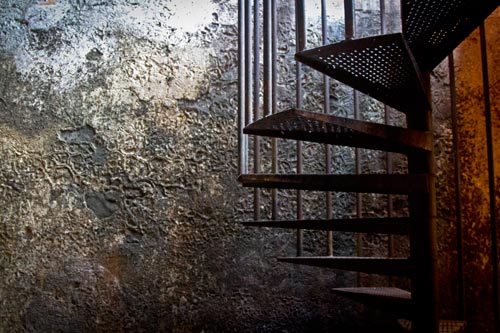
Now, I’ve seen a lot of stone-built crap while trotting around wineries, but even still, I’m always impressed when I come across quite old places that descend in to the earth to digest you along with the wine that they hold. Their barrel cellar’s age is somewhat indeterminate. It was originally a water cistern, but once they pumped out the funky water and decades if not centuries of mud, they found it to be a quite wonderful space to age their wines. Naturally, compared to outside, it keeps a very high humidity while at the same time a much lower temperature.
We stayed there long enough to get refreshed and then it was back upstairs in to what is a brand new restaurant that they’ve opened. The building that sits atop their cistern cellar was originally a chicken coop and while the back half is their cellar, they’re now running a restaurant on weekends. It has a nice terrace with views over the terraced hills and they serve high quality local dishes. And it’s here where we started opening some wines and dug in to what Clos Figueras is doing with all their grapes–not to mention their high-end olive oil that’s packaged like an aged Scotch.
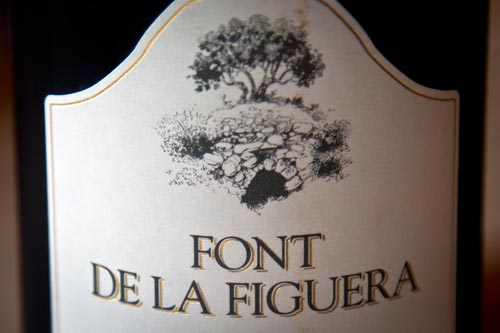
Font de la Figuera Blanc 2010 has a floral nose. While a blend of Viognier, White Grenache, and Chenin Blanc, you really wouldn’t know it. It’s bright, nearly to a point of bitter in the mouth, somewhat like a Verdejo. It could spend a bit more time in the bottle though as currently, it presents a great deal of depth to only then bottom out a bit short of what it could potentially be. 13.5% 18€
Font de la Figuera Negre 2008 is a blend of Grenache, Carignan, Syrah, and Cabernet Sauvignon. The nose opens up a bit hot and gives off hints of roasted corn and salt. It’s similar to what we know up in the Empordà region which makes sense given that it’s a blend that works well to round itself out. It’s a good deal more fruit forward and pronounced on the palate though plus the finish writhes in a wallop of leather notes while closing out. 14.5% 18€
Clos Figueres 2007 is, despite the hefty price tag, a “quintessential Catalan” when it comes to wine and it puts forth everything that is great from this eastern triangle of Spain. A blend of 60 year-old Grenache and Carignan as mixed in with a bit younger Syrah, Mourvèdre, and a little Cabernet Sauvignon. It presents delicate boysenberry and blackberry to the nose which drift back and forth from silky to spicy textures. The body boasts a surprising degree of minerality. It’s a strong wine with a definitive backbone but it sits lightly on the palate and doesn’t weigh you down or overwhelm. Wonderfully balanced and a testament to how well Grenache and Carignan play well with one another. 14.5% 42€
You can read even more in our regional Priorat enotourism guide


